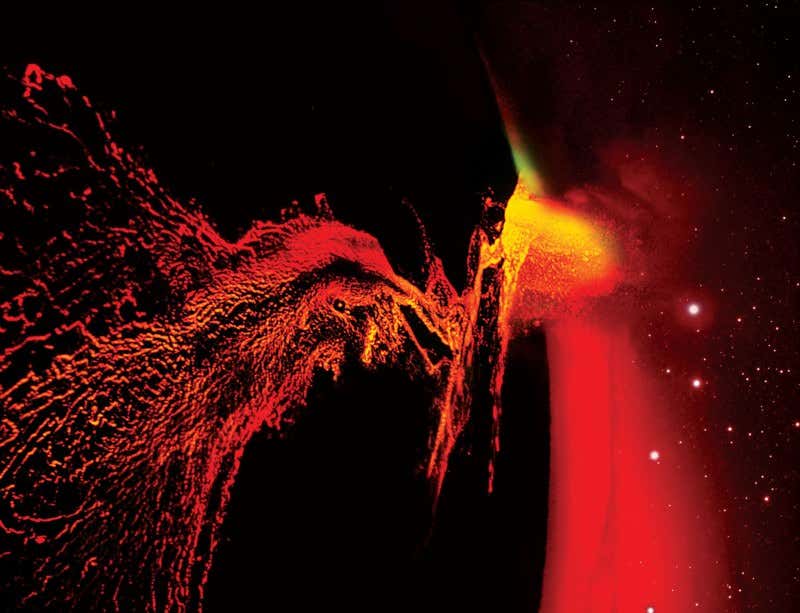
NASA Discovers Concealed Thermal Discrepancy Within the Moon: A Landmark in Lunar Research
In a remarkable advancement in scientific understanding, NASA researchers have identified a profound temperature variation between the Moon’s near and far hemispheres—an observation that could resolve a longstanding lunar enigma.
The research, released in the esteemed journal Nature on May 14, illuminates one of the Moon’s most notable physical characteristics: the sharp contrast between the basalt-laden volcanic nearside visible from Earth and the rough, heavily cratered farside. By revealing a consistent thermal imbalance embedded within the Moon’s mantle, scientists might finally provide a plausible explanation for this hemispheric divergence.
Insights from GRAIL Data Based on Gravity
This discovery is the culmination of a decade of investigation led by Ryan Park, head of the Solar System Dynamics Group at NASA’s Jet Propulsion Laboratory. The team leveraged data from NASA’s GRAIL (Gravity Recovery and Interior Laboratory) mission, which launched in 2011 with the aim of mapping the Moon’s gravitational field in remarkable detail. GRAIL’s twin spacecraft orbited the Moon from January to December 2012, meticulously tracking gravity-induced variations to explore the satellite’s internal structure.
Instead of depending on surface exploration, the team adopted a groundbreaking technique termed “extraterrestrial tidal tomography.” This approach analyzes how a planetary body deforms under gravitational forces—in this case, predominantly Earth’s gravitational pull on the Moon. By investigating subtle gravitational distortions, the scientists developed an intricate model of the Moon’s internal characteristics.
Crucial to the research was the assessment of the Moon’s gravitational tidal Love number, focusing on the “degree-3” (k₃) parameter. This value was discovered to be approximately 72% higher than what would be anticipated for a Moon with a consistent internal structure. The outcome indicated a surprising internal discrepancy: a temperature difference of 100-200 degrees Kelvin (around 180-360°F) between the Moon’s two hemispheres that has endured for billions of years.
The Riddle of Lunar Asymmetry
This newfound temperature asymmetry results in a 2-3% variance in shear modulus—which gauges a material’s resistance to deformation—between the nearside and farside mantles. Essentially, the Moon flexes and deforms more easily on its Earth-facing side, signifying a softer, warmer mantle. This heating likely facilitated the ascent of molten rock to the surface, leading to the expansive volcanic plains, or maria, that characterize the nearside.
“We observed that the Moon’s near side is flexing more than the far side,” remarked Park. “When we reviewed the results, we were so astonished that we repeated the analysis multiple times for confirmation. After ten years of research, we are confident in this finding.”
Although differences in the Moon’s surface appearance have been noted for centuries, the underlying reasons for the contrast have remained debated. Many hypotheses focused on external impacts or chemical discrepancies. However, this new study suggests that energy from heat-emitting radioactive elements accumulated deep within the mantle is the primary factor behind this historical asymmetry.
Thermal History and Moonquakes
One of the most captivating implications of this revelation is its connection to the Moon’s seismic activity and geological past. The researchers suggest that the buildup of heat-generating elements—like thorium and uranium—within the nearside mantle contributed to volcanic activity that peaked between 2 and 3 billion years ago.
More intriguingly, there may still be remnants of this heat today. According to the research, small areas of partially molten rock could continue to exist deep within the Moon, particularly on the nearside. This partially melted material correlates with the established distribution of deep moonquakes, indicating that these warmer, softer regions generate stress hotspots where seismic events transpire under the influence of Earth’s gravity.
This hypothesis is bolstered by findings from China’s Chang’e-5 sample return mission, which uncovered evidence of relatively recent volcanic activity possibly as young as 120 million years. Even though it has long surpassed its volcanic peak, the Moon may still harbor some geological life beneath its surface.
Extending the Method Beyond the Moon
This analytical methodology wasn’t limited to the Moon. In a related study published in Nature Astronomy on April 23, Park’s group employed similar techniques on the asteroid Vesta using data from NASA’s Dawn spacecraft. Surprisingly, Vesta did not show clear internal differentiation. Instead, it appeared relatively homogeneous, prompting scientists to reevaluate current models of planetary differentiation in smaller celestial bodies.
As Park mentioned, “Our method is adept at detecting any alterations in the internal structure of celestial entities, whether due to time-varying gravitational tides like those on the Moon or static irregularities like an asteroid’s uneven mass distribution.”
The team has since shifted its focus to other celestial bodies, including Jupiter’s sulfur-emitting moon Io and the dwarf planet Ceres. Initial results indicate that Io might not possess a global magma ocean as previously believed.